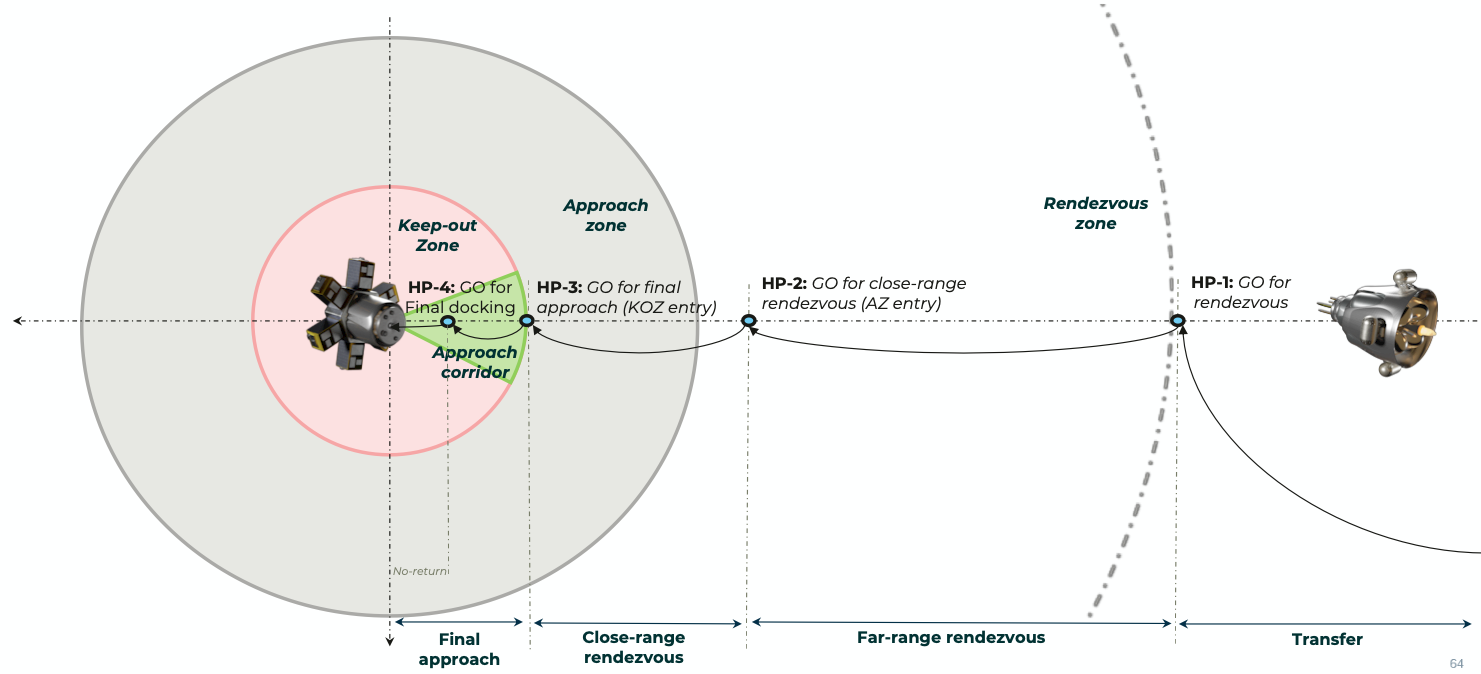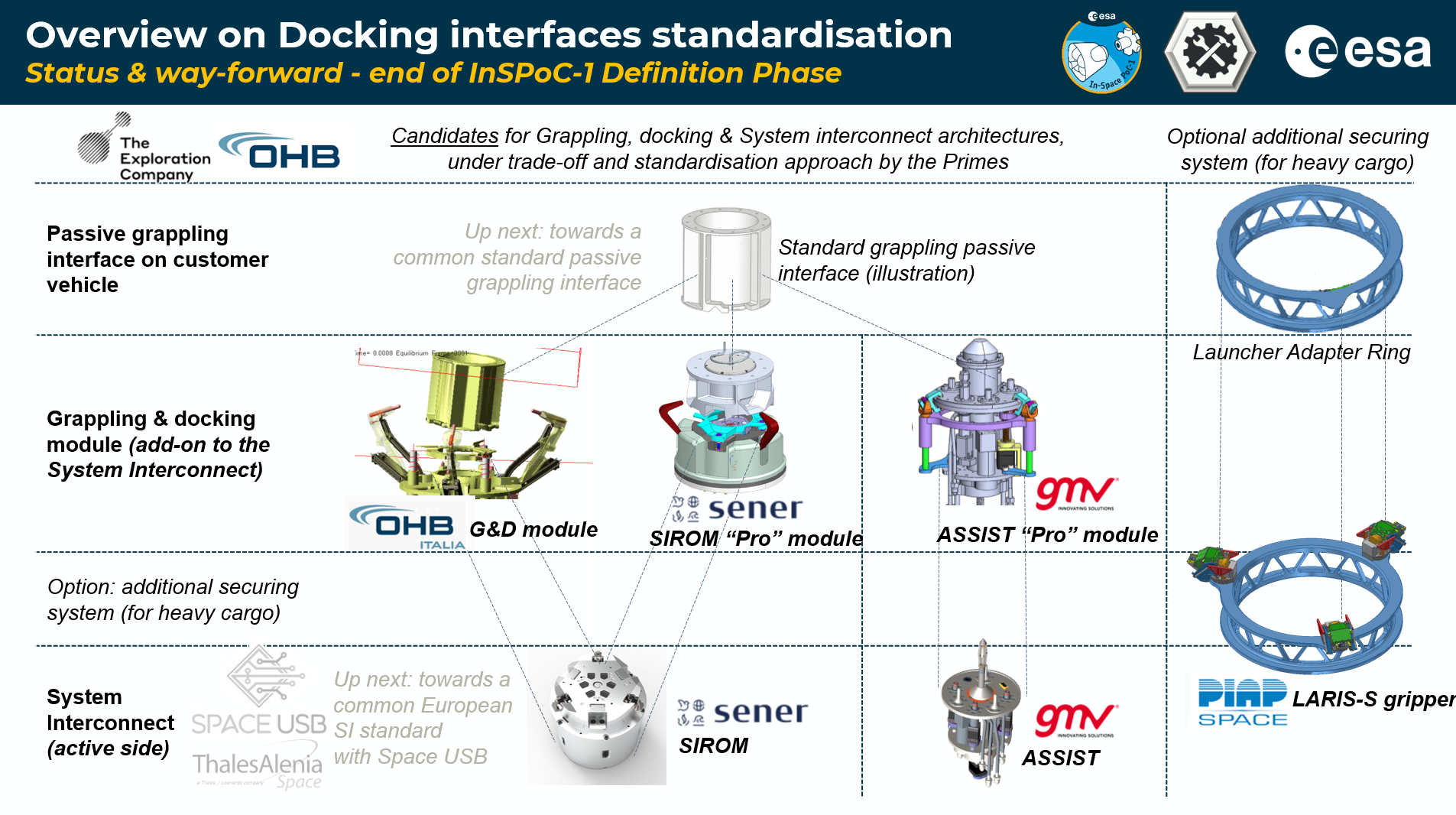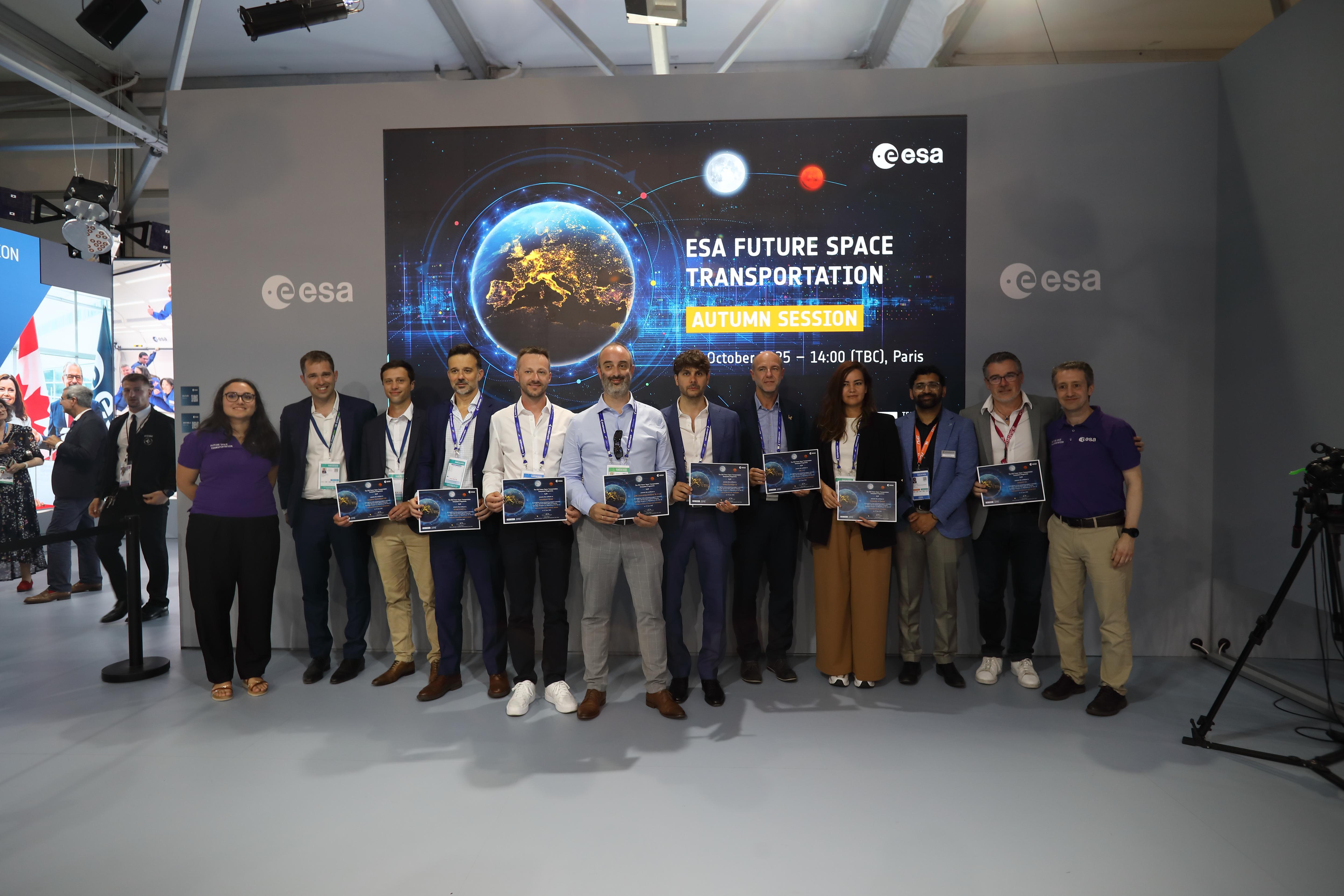The In-Space Transportation Club: a collaborative platform for innovation
On 11 June 2024, ESA concluded the second session of the In-Space Transportation Club, a virtual event hosted by the In-Space Transportation Proof-of-Concepts (InSPoC) venture. Over 120 participants from across the European SpaceTech industry gathered to focus on the development of advanced rendezvous and docking interfaces.
This session built upon the success of the inaugural meeting in February, showcasing the progress and achievements made during the InSPoC-1 Definition Phase. A key focus was identifying the critical requirements for designing rendezvous and docking interfaces that will enable the future of in-orbit transportation services.
In-Depth Exploration of Docking Interfaces
Rendezvous and docking interfaces are crucial for the future of space logistics and transportation, facilitating seamless connections between spacecraft in zero-gravity conditions through automated mechanical and electrical coupling. The Club’s second session provided an opportunity to explore several key areas critical to the advancement and standardisation of these interfaces.
The In-Space Transportation Ecosystem and Docking Use-Cases: The two prime contractors leading the InSPoC-1 Definition Phase presented an overview of the future in-space transportation ecosystem, identifying various docking use cases and their corresponding design drivers. These analyses included use-cases such as:
- In-Space Transportation Vehicles (ISTVs) docking with target payloads in high parking orbits and performing high-thrust manoeuvres,
- ISTVs connecting with orbital propellant depots for refuelling, and
- ISTVs docking with In-Orbit Servicing Vehicles to hand over cargo for in-orbit assembly or maintenance.
The Club analysed the vehicle characteristics and refined docking use-cases, ensuring that InSPoC-1 development meets the needs of the ecosystem.
Concept of Operations (ConOps), Guidelines for Safe Rendezvous & GNC-Related Interfaces: Detailed guidelines for safe rendezvous and interfaces related to Guidance, Navigation, and Control (GNC) were explored, which will help ensure the safe and efficient operation of docking processes in space.

Generic: Scheme of generic Rendezvous ConOps – phases, zones & hold-points
Grappling, Docking, and System Interconnect Interfaces: The results of the design and initial testing phases for grappling, docking, and system interconnect interfaces were presented and discussed. The goal is to develop standardised, easily integrable solutions for direct docking that can withstand the forces generated during high-thrust in-space manoeuvres.
Inter-Vehicle Communication Layer, Protocols, and Exchange: Robust inter-vehicle communication layers, including protocols and data exchange mechanisms, are crucial for coordinating and executing docking manoeuvres.
Fostering a unified ecosystem
InSPoC strives to develop a standardised, modular framework for an in-space transportation ecosystem, including technologies for mechanical and electrical coupling between spacecraft, as well as collaborative GNC hardware and procedures. ESA facilitated an InSPoC-1 standardisation workshop with OHB Systems, The Exploration Company, and their respective consortia to promote convergent design principles and operational guidelines. This collaborative approach drives the creation of secure and standardised interfaces for grappling, docking and interconnection, promoting future interoperability between spacecraft.
Lucrezia Veggi, InSPoC-1 project manager from The Exploration Company, mentioned the benefits of having an “organisational committee that assume responsibility for these standardisation efforts, that define, disseminate and maintain standards.” This will ensure that the standards are applied and developed projects are compliant.
This approach not only enhances operational efficiency but also ensures compatibility across various systems and providers, paving the way for a more integrated space transportation ecosystem.
“Collaboration and standardization are at the heart of our approach”, said Marc Scheper, the InSPoC-1 project manager from OHB System. “By working together with The Exploration Company and other key players, we are developing unified systems that will ensure seamless integration and interoperability of docking interfaces. This collaborative effort is essential for creating a cohesive and efficient in-space transportation ecosystem”.

An overview on the candidates for grappling, docking & system interconnect architectures, under trade-off and standardisation approach from the prime contractors.
The key technology providers and prime contractors presented solutions on:
- Grappling & Docking modules: G&D module by OHB-I add-on to SIROM, SIROM “Pro” from SENER, ASSIST “Pro” from GMV
- System Interconnection: SIROM from SENER, ASSIST from GMV
- LARIS-S securing systems by PIAP Space, an optional and additional system for heavy cargo.
The Club Session #2 was an opportunity to showcase the performances and standardisation perspectives of these solutions, alongside the test results of their air-bearing capabilities (notably the two standout docking systems recently tested at ESA’s Orbital Robotics Laboratory).
A Role Model for Future Space Transportation
The In-Space Transportation Club, initiated by ESA’s In-Space Transportation Proof-of-Concepts (InSPoC) venture, serves as a platform for stakeholders in the space industry to discuss and develop innovative space transportation technologies. InSPoC falls under ESA’s future space transportation ecosystem programme (FLPP), an essential component of ESA’s overarching space transportation strategy. The Club empowers the European SpaceTech community to shape the future of European space transportation by fostering connections and facilitating collaborative development of essential technologies.
“We have to be more agile, more rapid, quicker and deliver with a mix of achievement and risk, which is different from the past,” said Jerome Breteau, head of Future Space Transportation Preparation at ESA, “and in this respect the user club and the overall process of in-space transportation is both a pilot case and a role model.”
What’s Next for InSPoC?
The results from the InSPoC-1 Definition Phase, presented during the session, are set to pave the way for the next stages of development. The upcoming InSPoC-1 Implementation Phase will finalise the interface designs, culminating in an In-Orbit Demonstration (IOD) that will showcase the collaborative approach, rendezvous and docking capabilities between two spacecraft.
As these advanced docking systems undergo further testing and refinement, ESA’s vision of a seamless and efficient space transportation network inches closer to reality. This progress not only propels Europe towards a leading position in orbital servicing and logistics operations but also establishes a strong foundation for future space exploration and commercial activities.
The In-Space Transportation Club will continue to organise regular sessions and transverse working groups on various topics related to in-orbit transportation, such as orbital propellant depots, in-orbit refilling and on-board and shared intelligence.
The Session #3 of the In-Space Transportation Club, which will take place around December 2024, will focus on in-orbit refilling technologies for the ecosystem.
FLPP Brochure









